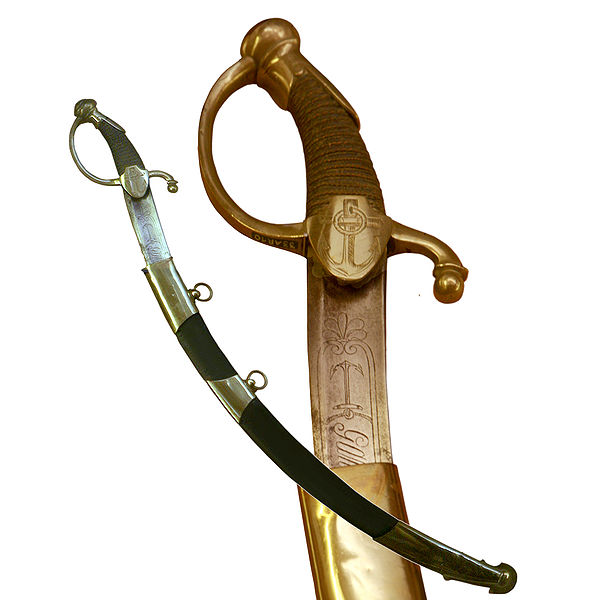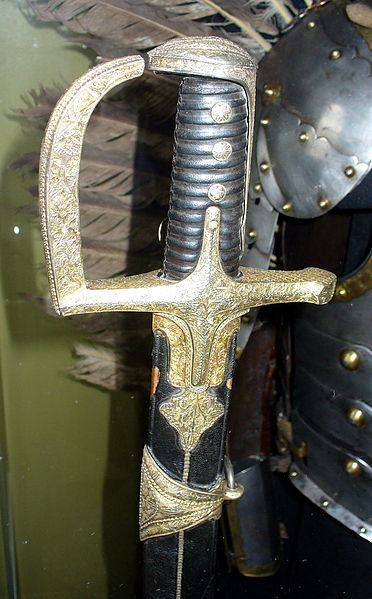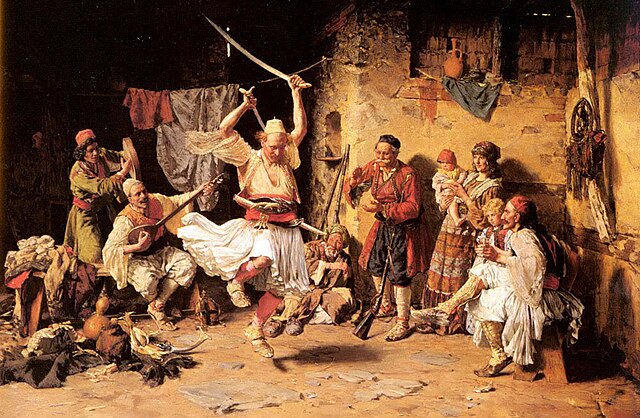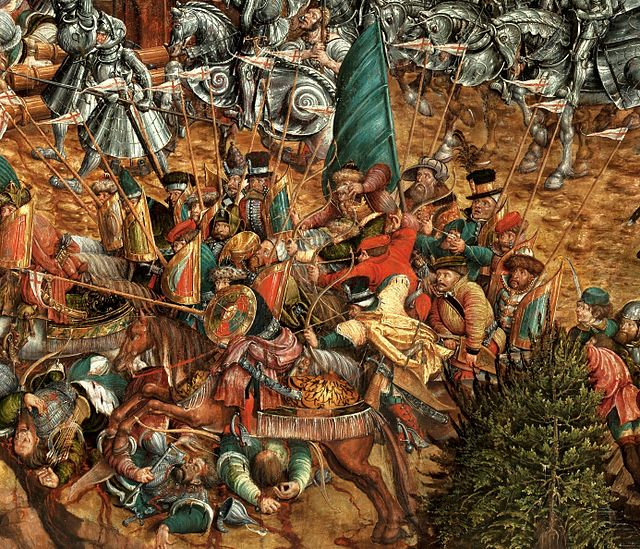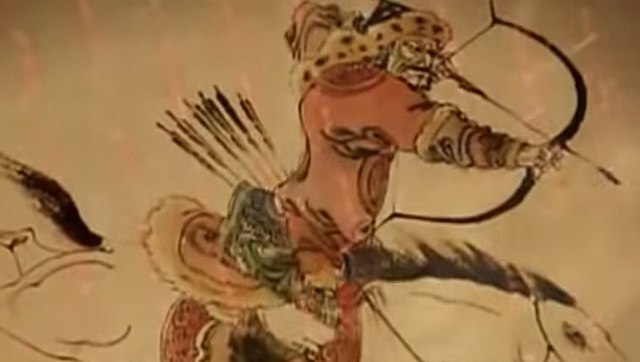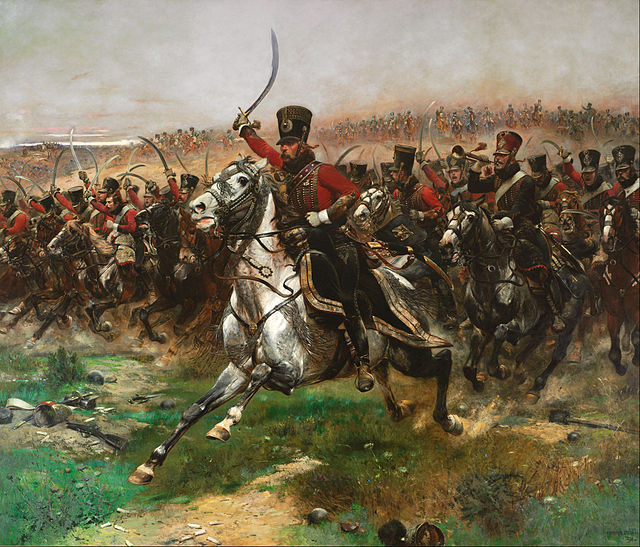A sabre is a type of backsword with a curved blade associated with the light cavalry of the early modern and Napoleonic periods. Originally associated with Central European cavalry such as the hussars, the sabre became widespread in Western Europe during the Thirty Years' War. Lighter sabres also became popular with infantry of the early 17th century. In the 19th century, models with less curving blades became common and were also used by heavy cavalry.
Sheathed French sabres of the sailors of the Guard, First French Empire
A szabla used by Polish Hussars, 1614
The Sword Dance (1890) by Paja Jovanović
A British Hussar general with a scabbarded kilij of Turkish manufacture (1812)
Light cavalry comprised lightly armed and armored cavalry troops mounted on fast horses, as opposed to heavy cavalry, where the mounted riders were heavily armored. The purpose of light cavalry was primarily raiding, reconnaissance, screening, skirmishing, patrolling, and tactical communications. Prior to the 17th century they were usually armed with swords, spears, javelins, or bows, and later on with sabres, pistols, shotguns, or carbines.
Polish-Lithuanian light cavalry during the Battle of Orsha in 1514, by Hans Krell
The infamous Charge of the Light Brigade, in the Battle of Balaclava in 1854 (painted by William Simpson in 1855)
Mongol soldier on horseback, preparing a mounted archery shot
French 4th Hussar at the Battle of Friedland, 14 June 1807. Vive L'Empereur! by Édouard Detaille, 1891.

